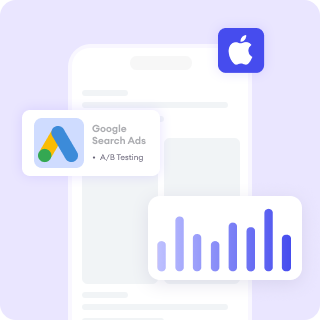Checking the health of your Core Web Vitals (CWV) involves evaluating your site's performance in terms of three critical user experience metrics which are Largest Contentful Paint (LCP), First Input Delay (FID), and Cumulative Layout Shift (CLS). Monitoring these metrics helps ensure your website is optimized for both user experience and search engine ranking.
Here’s how to evaluate your Core Web Vitals (CWV), including tools needed for CWV and common issues affecting CWV:
Tools to Check Your Core Web Vitals
1. Google Search Console (GSC)
Google Search Console provides an easy way to assess the overall health of your CWV, especially for pages that are underperforming.
- Page Experience Report: This report offers insights into how well your site is meeting the CWV thresholds. It categorizes URLs as Good, Needs Improvement, or Poor based on their CWV scores.
- Core Web Vitals Status: You’ll be able to see how many pages pass or fail the Core Web Vitals based on real-user data.
- URL Inspection Tool: For more granular data, you can use this tool to check the CWV performance of individual pages.
2. PageSpeed Insights
PageSpeed Insights provides a detailed breakdown of your CWV scores. It analyzes both lab data (controlled testing conditions) and field data (real-world data from actual users). It also offers suggestions for improvement.
- Field Data: Offers real-world insights based on Chrome users.
- Lab Data: Provides simulated data for both mobile and desktop versions of your site.
- CWV Scores: You’ll see the LCP, FID, and CLS scores, along with suggestions for improving them.
3. Lighthouse
Lighthouse is an open-source tool integrated into Chrome’s Developer Tools. It audits pages for performance, accessibility, SEO, and CWV. You can run it in Chrome DevTools or as a standalone tool.
- LCP, FID, and CLS Metrics: Lighthouse gives detailed information about how each of these metrics is performing.
- Performance Overview: It offers insights into the overall performance of the page, highlighting areas where improvement is necessary.
4. Web Vitals Extension
The Web Vitals Chrome extension is another easy tool to monitor your CWV in real-time. This extension gives you the current LCP, FID, and CLS scores for any page you visit.
Key Metrics for Good CWV
For your site’s CWV to be in good condition, the following thresholds must be met:
- Largest Contentful Paint (LCP): Should be under 5 seconds.
- First Input Delay (FID): Should be under 100 milliseconds.
- Cumulative Layout Shift (CLS): Should be under 1.
If any of these metrics exceed the recommended thresholds, it means your page experience needs improvement.
Common Issues Affecting Core Web Vitals
If your CWV metrics are not in good condition, the issue could be caused by several factors. Here are the common problems and how they affect each of the Core Web Vitals:
1. Large Largest Contentful Paint (LCP)
A high LCP score indicates that the largest visible content element (such as an image or block of text) is taking too long to load. This delays the perceived loading time of the page and can frustrate users.
Common Causes:
- Unoptimized Images: Large, uncompressed images are a common culprit. Without proper formats (like WebP) or sizes, they can significantly delay page load.
- Slow Server Response Time: If your web server takes too long to respond or send initial content, it will delay the rendering of the largest element.
- Render-Blocking JavaScript and CSS: When JavaScript and CSS files block the rendering process, they delay the load of visible content.
How to Improve:
- Compress and properly size images.
- Use lazy loading for images below the fold.
- Optimize CSS and JavaScript files (minification, deferral, or asynchronous loading).
2. High First Input Delay (FID)
A high FID score indicates that the browser is slow to respond when a user interacts with the page, such as clicking a button or submitting a form. FID impacts how quickly a user can engage with the page.
Common Causes:
- Long JavaScript Execution: Large JavaScript files or heavy scripts can block the main thread, making it unresponsive to user input.
- Non-Optimized Third-Party Scripts: Ads, widgets, or analytics scripts can significantly increase the main thread blocking time.
How to Improve:
- Split large JavaScript files into smaller chunks to allow quicker interactivity.
- Defer or asynchronously load non-essential scripts.
- Minimize third-party script usage or optimize their execution.
3. High Cumulative Layout Shift (CLS)
A high CLS score occurs when elements on a page shift unexpectedly as it loads. This can be disorienting for users, especially on mobile devices, and can lead to mis-clicks.
Common Causes:
- Images Without Size Attributes: If images, videos, or ads don’t have set dimensions, they can load unpredictably, causing shifts in layout.
- Dynamic Content Insertion: Content that loads after the page has already begun rendering (e.g., ads or popups) can push other elements around.
- Font Rendering Issues: Fonts loading after the initial content can lead to text shifts.
How to Improve:
- Always specify width and height for images and videos to prevent layout shifts.
- Reserve space for ads and other dynamic content to prevent them from shifting other elements.
- Use font-display: swap CSS property to load fallback fonts until custom fonts are available.
Conclusion
To ensure your Core Web Vitals are in good condition, regularly monitor your site using tools like Google Search Console, PageSpeed Insights, and Lighthouse. Aim for your LCP to be under 2.5 seconds, FID under 100 milliseconds, and CLS below 0.1.
Don't forget to address common issues like unoptimized images, large JavaScript files, and unexpected content shifts.
By optimizing these factors, you can improve your site’s performance, enhance user experience, and achieve better rankings in Google search results.
Improve your website performance with FoxAdvert!
If you are looking forward on how to improve your website performance, our professional team of SEO experts at FoxAdvert can help you. Contact us today to start your journey 😊











